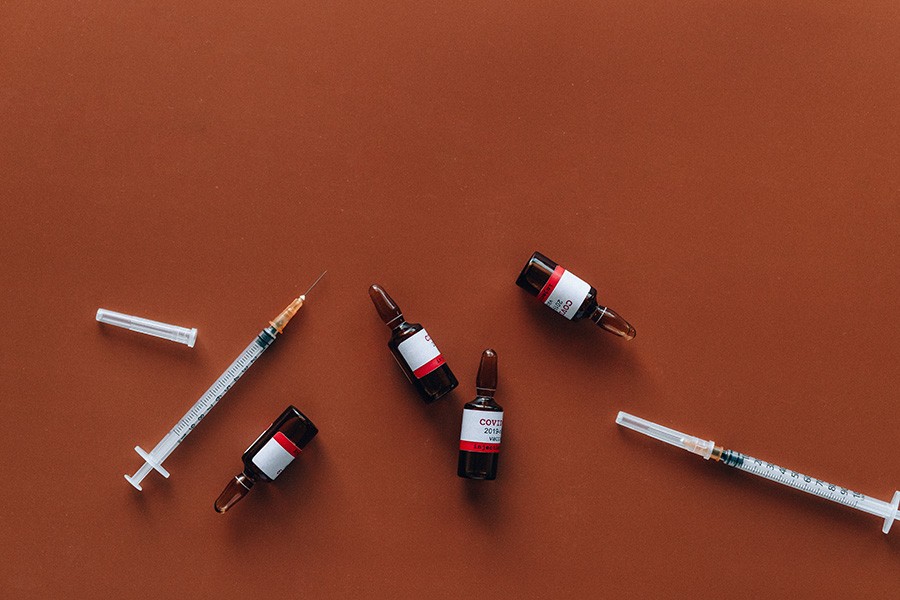The history of vaccine goes back in time when the world agonised over the fear of epidemics caused by pathogens.
An English scientist, named Edward Jenner, did something unethical that turned out to be a breakthrough in the history of vaccinology. Milk maidens, who worked with cows, contracted the cowpox disease. However, these women appeared to be immune to much severe smallpox.
Edward noticed this unusual phenomenon and carried out an experiment. He inoculated an eight-year-old boy with cowpox germs by administering fluid from the puss of cowpox patient’s blisters. He then infected the child with smallpox. His expectation became a reality when the boy did not contract smallpox.
Ever since this great invention, Edward Jenner has always been revered as the father of vaccinology.
What is a vaccine?
It is a kind of attenuated or dead version of the same disease-causing pathogenic microbe that is incorporated into our system for creating an immune response. When living and potent pathogenic microbes attack us, our immune cells immediately recognise them as enemies, if we are vaccinated against them.
The immune system knows who the threat is and whom to kill. As a result, the system is ready to fight off its enemies easily upon re-infection. Vaccines help our body recognise the pathogens as foreign particles and wipe them out when they try to invade our bodies. However, here the attenuated version of the disease-causing pathogenic microbe acts as the antigen which stimulates the formation of the antibody production. The antibody works as the bullets used by immune cells (the soldiers) to destroy the targeted pathogens.
How does a vaccine work?
Since the genesis of life, micro-organisms have co-existed with us. A study showed that approximately 3.8x10^13 bacteria live in the body of a man weighing 70kg.
However, some microbes cause diseases in humans. Termed pathogenic micro-organisms, they could be bacteria, virus, or even fungus. To fight such pathogens, we have our immune system designed with the combination of several immune cells. That is precisely where the vaccines work. It works by triggering an immune response and activating the immune cells against the uninvited guests, the pathogens.
Immune system and mechanism of vaccines
Before discussing the mechanism of vaccination, we must know the basics of the immune system. Firstly, the immune cells, which are widely involved and manipulated in the whole process of vaccination.
Next is antigen-presenting cell or APC. Its function is to catch the pathogen and provide specific protein (the antigen) to our system using a specialised molecule.
Think of our body as a sovereign state. During an invasion, APCs (the soldiers) catch the pathogens (the invaders) and expose it to our immune system (the court). Then, after a series of cellular functions (court sessions), the result (court verdict) is the formation of some antibodies (special security force) by the B-cells to protect our system (the state) from re-infection (further invasion).
This is how the immune system functions and this process is manipulated by the working mechanisms of vaccines. As we already discussed, vaccines are just a representation of weaker pathogens to help our body recognise the potential pathogens that cause disease. And as a defence mechanism, the immune response is triggered by the body through the formation of antibodies against that specific pathogen for which the vaccine has been created.
How is it designed?
Designing a vaccine is the most crucial part before trialling and commercialising it. The basic steps of vaccine design are summarised below:
Step 1: Trace out the causative agent of the disease
In this step, the pathogen’s characteristics and virulence factor must be determined. Virulence factor is the substance released by the pathogens that enable it to be pathogenic.
Step 2: Immunity must be introduced
The targeted cells and mechanisms of the immune system must be determined. For instance, the tertiary and primary structure of a protein is recognised by the B-cells and T-cells of the immune system respectively.
Step 3: Select the epitope
An epitope is often an antigenic determinant which is the part of the antigen recognised by the immune system. To build a vaccine that targets an epitope, we must select which epitope molecule should be targeted.
Step 4: Route of administration is selected
Vaccine is administration mostly through injection.
Step 5: Immune response optimisation
Often some extra substances or molecules are added to optimise vaccine’s action.
Step 6: Selecting the number of doses required
It needs to be decided how many vaccine shots or booster doses are required for different age groups.
Clinical trials of vaccine explained
A proper trial for vaccines is mandatory before the start of mass administration as there is no room for mistakes with safety issues when vaccination is concerned.
These days, we have been hearing a lot about trials and vaccine phases. What exactly are these phases of vaccine development? What happens in each phase? What would happen if any of these phases were excluded?
Answers to all these questions are summarised in the following diagram.

The steps of a vaccine’s clinical trial. Image taken from the Australian Academy of Science.
The availability of the COVID-19 vaccine in Bangladesh
Bangladesh lags far behind in biological research and development. Resources for vaccine development are so scarce that being hopeful about creating a vaccine against SARS-CoV2 would be too much of an expectation.
While the WHO listed a candidate from Bangladesh for innovating a COVID-19 vaccine, its claim to make vaccine available by December 2020 has been frowned upon by the health experts. However, according to media reports, the health ministry recently signed a deal to purchase 30 million shots of the AstraZeneca COVID-19 vaccine, popularly known as the Oxford university vaccine.
Other media reports suggest that China promised to prioritise the availability of vaccine in Bangladesh once prepared.
Shaeri Nawar is a graduate in Biotechnology from the BRAC University in Dhaka.


